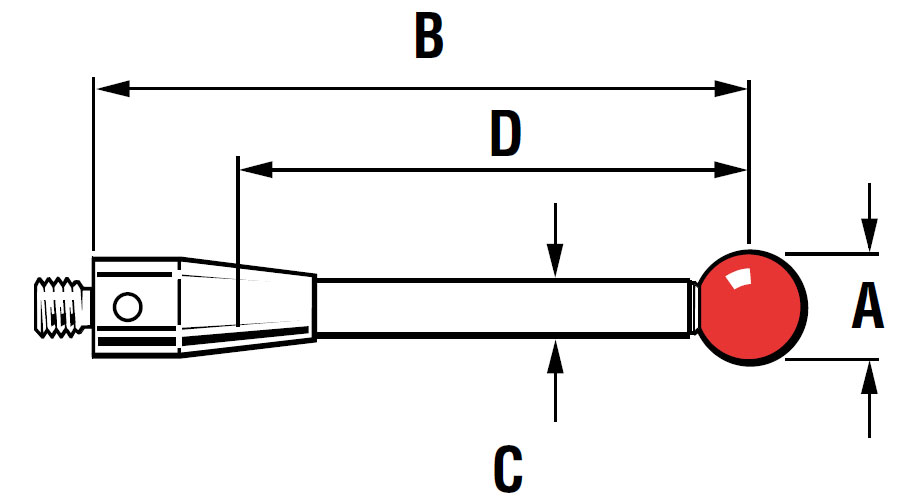
Product Details:
For most measurement scenarios, ruby is one of the hardest materials known for industry-standard and optimal measurement ball materials. Synthetic ruby is a 99% pure alumina crystal (corundum) sintered at 2000°C using a special process. The corundum is then cut and gradually processed into high-precision spheres. Ruby measurement balls have an extremely smooth surface, with very high compressive strength and high mechanical wear resistance.
Advantages:
Exquisite material selection
Fine craftsmanship
High precision
High stability
High reliability
Specification:
Available thread sizes are M2 and M3, offering options for different types of measuring machines (M2 is mainly used for industry-standard coordinate measuring machines, while M3 is typically used for manual coordinate measuring).
The measuring balls are made of ruby or steel, and the measuring rods are made of ceramic, steel, or tungsten steel.
The diameters of the measuring balls range from 0.5 to 8 mm.
A: Measuring ball diameter
B: Total length
C: Measuring rod diameter
D: Effective working length

Types of styli:
Straight styli, star styli, disc styli, cylindrical styli, needle styli, ceramic styli, and special styli, etc.
Quality Control:
Uses original imported Taylor roundness testers from the UK to check the roundness of ruby measuring balls, strictly controls the concentricity of the stylus, and ensures the firmness of the ball's adhesion to prevent detachment.
Applications:
Mainly used on coordinate measuring machines, gear inspection instruments, and machine tool probes, as the actuating element of trigger-type sensors.
Coordinate Measuring Machine (CMM)
Buying Recommendations:
Prefer shorter styli to minimize bending or deformation, which can reduce accuracy.
Reduce the number of joints in the stylus to decrease potential bending and deformation points.
Choose larger measuring ball diameters to increase the distance between the ball and the measuring rod, reducing mis-triggering due to rod collision and increasing effective working length. Larger diameters also mean larger rod diameters can be used, increasing the rigidity of the stylus. Furthermore, larger gem ball diameters are less affected by the surface finish of the workpiece being measured.

Name: Jake Wang
Mobile:+86 16725261381
Tel:
Whatsapp:+8616725261381
Email:sales@lygglass.com
Add:Pingming Town Resident Industrial Park, Donghai County, Lianyungang City, Jiangsu Province